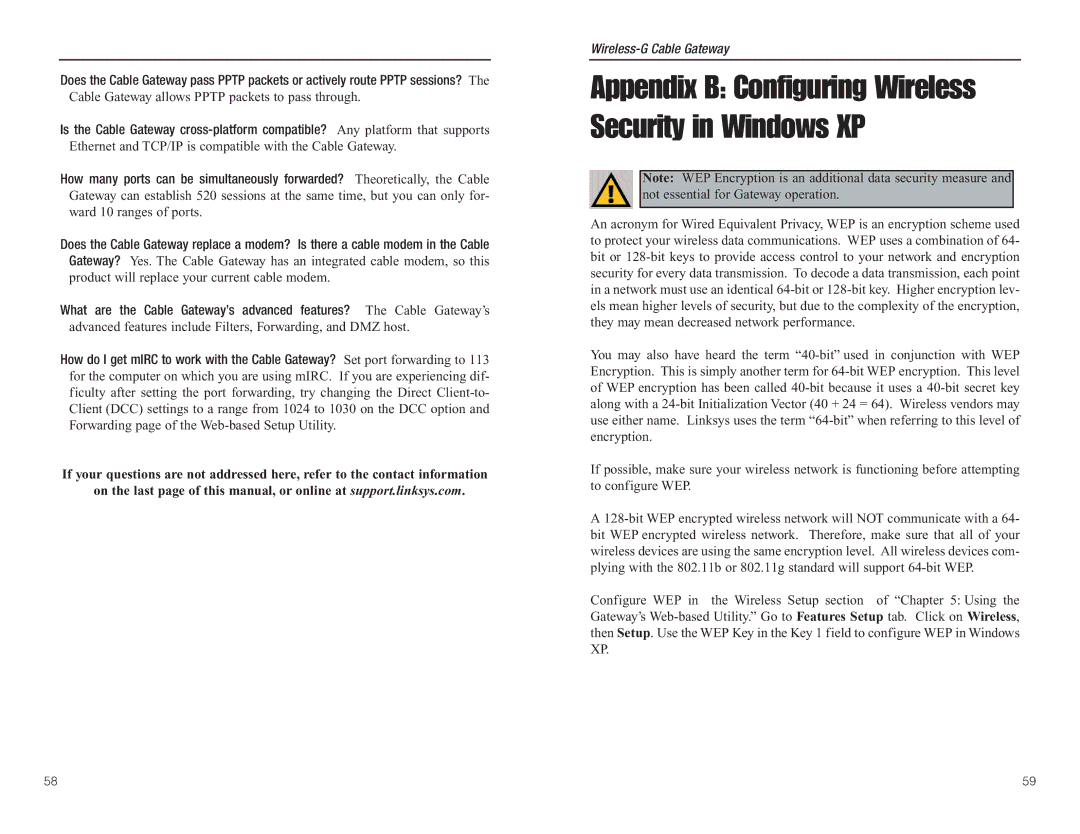
Does the Cable Gateway pass PPTP packets or actively route PPTP sessions? The
Cable Gateway allows PPTP packets to pass through.
Is the Cable Gateway
How many ports can be simultaneously forwarded? Theoretically, the Cable Gateway can establish 520 sessions at the same time, but you can only for- ward 10 ranges of ports.
Does the Cable Gateway replace a modem? Is there a cable modem in the Cable Gateway? Yes. The Cable Gateway has an integrated cable modem, so this product will replace your current cable modem.
What are the Cable Gateway’s advanced features? The Cable Gateway’s advanced features include Filters, Forwarding, and DMZ host.
How do I get mIRC to work with the Cable Gateway? Set port forwarding to 113 for the computer on which you are using mIRC. If you are experiencing dif- ficulty after setting the port forwarding, try changing the Direct
If your questions are not addressed here, refer to the contact information on the last page of this manual, or online at support.linksys.com.
Wireless-G Cable Gateway
Appendix B: Configuring Wireless Security in Windows XP
Note: WEP Encryption is an additional data security measure and not essential for Gateway operation.
An acronym for Wired Equivalent Privacy, WEP is an encryption scheme used to protect your wireless data communications. WEP uses a combination of 64- bit or
You may also have heard the term
If possible, make sure your wireless network is functioning before attempting to configure WEP.
A
Configure WEP in the Wireless Setup section of “Chapter 5: Using the Gateway’s
58 | 59 |
